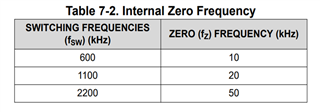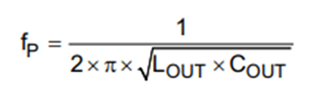Can you please comment on an apparent discrepancy between the stability criteria suggested by the datasheet versus the Excel calculator?
Datasheet:


Plugging 4.7µH & 1µF in the calculator, with 60% derating, Fsw = 1.1MHz, results in "GOOD" stability, while the calculation with the datasheet the capacitor should be at least 15µF. Can you comment on that?
Thanks!

